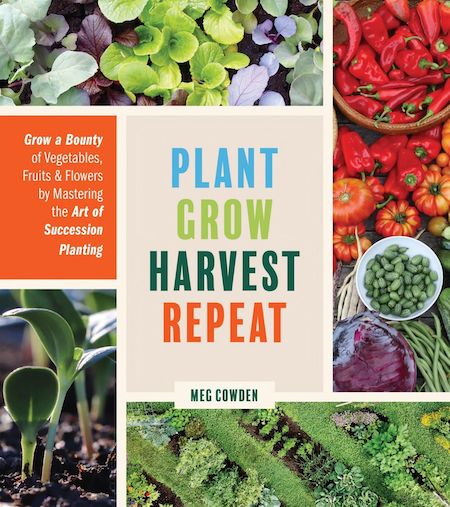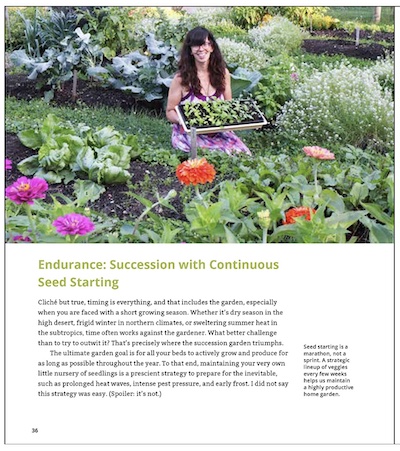Beyond Square Foot Gardening
By George Graine, Fairfax Master Gardener
“Not all seedlings are weeds. You may feel that life is too short to leave a seedling in till it’s large enough to identify. My own feeling is that life’s too interesting not to leave it there until you can identify it.”
—Christopher Lloyd in “The Well-Tempered Garden (1973)
 Do you remember the garden concept called Square Foot Gardening? If so, then you may recall the originator was Mel Bartholomew. In 1981 he wrote a book by the same name. Ultimately his unique approach to growing vegetables became so popular that a national PBS television series featured this method. His idea was to lay out, plant and maintain a garden in any amount of space by using a grid of 1-foot by 1-foot squares. In each square you placed a single seed or plant. This method resulted In conserving a lot of space, water, fertilizer and other factors so that gardening this way would make the most of your available space. Furthermore, the Bartholomew way took only one-fifth the amount of space needed for a conventional single-row garden to produce the same harvest, plus it is much easier to maintain.
Do you remember the garden concept called Square Foot Gardening? If so, then you may recall the originator was Mel Bartholomew. In 1981 he wrote a book by the same name. Ultimately his unique approach to growing vegetables became so popular that a national PBS television series featured this method. His idea was to lay out, plant and maintain a garden in any amount of space by using a grid of 1-foot by 1-foot squares. In each square you placed a single seed or plant. This method resulted In conserving a lot of space, water, fertilizer and other factors so that gardening this way would make the most of your available space. Furthermore, the Bartholomew way took only one-fifth the amount of space needed for a conventional single-row garden to produce the same harvest, plus it is much easier to maintain.
Today, Meg McAndrews Cowden, in her book “Plant Grow Harvest Repeat: Grow a Bounty of Vegetables, Fruits and Flowers by Mastering the Art of Succession Planting” (Timber Press, 2022) has another way to garden that may be more productive and more visually appealing. Her comprehensive guide explains how to get longer and larger harvests, and the key to this achievement is through succession planting. By continuous planting and replanting in the same space after a crop (you name it) matures, you then harvest the last planting and another crop takes its place. Consider this example. Peas are an early season crop. After they are finished, now you can plant something else in the same area. By following nature, i.e., the seasons, you should be able to plant something else that is favorable to whatever the weather is at the time.
Reading this book may help you change the way you grow vegetables now and in ways you probably had not previously considered. You will learn how the old “one and done” planting routine can be changed. To help you achieve this approach, the book includes several sowing charts that show how to plan your garden. There are also many excellent color photos that may inspire you. Consider succession planting as akin to the life cycle changes that occur with each season. Assuming you are familiar with the seasonality of flowers, you should be able to understand that this mindset is similar to the growing season of vegetables. For emphasis, the book title “Plant Grow Harvest Repeat” means for another vegetable (same or different) to take the place of the one you just harvested.
Some things in life are rarely and truly over, and they can even be diverse. As an example, does pruning flowering shrubs and watering plants in containers come to mind? Such is life in the garden, and in a similar way, the author notes that, “Continuous planting is the ultimate garden tool, entices you to experiment and try something new, to stretch your season a week or a month longer, and to keep your sowing stamina strong.” In other words, your garden is never fully planted because it is forever evolving.
 Change is inevitable! This is the idea of planting, harvesting and doing it again, probably with different or perhaps the same seeds or starter plants. As a gardener, your choice of plants should be personal. What does your family like to eat? For example, lots of salads (lettuce, peppers, tomatoes) and vegetables (carrots, broccoli, spinach, potatoes and asparagus). The list can go on and on. Turning to the book index, in addition to many vegetables, you will also find information about growing fruits and berries.
Change is inevitable! This is the idea of planting, harvesting and doing it again, probably with different or perhaps the same seeds or starter plants. As a gardener, your choice of plants should be personal. What does your family like to eat? For example, lots of salads (lettuce, peppers, tomatoes) and vegetables (carrots, broccoli, spinach, potatoes and asparagus). The list can go on and on. Turning to the book index, in addition to many vegetables, you will also find information about growing fruits and berries.
Many charts will help sort out your planting plans and will tell you what you need to know about spacing and timing for the various kinds of vegetables and fruits, such as types of potatoes and strawberries. Each variety has unique characteristics. Charts on types for successions will aid you in understanding and maximizing the growing space. In addition to your awareness of the many different vegetables, it is also important to know the days-to-maturity and uniqueness of the plant. As an example, regarding beans, they can be pole or bush type in addition to many different varieties.
Of course, a good gardening book would not be complete without some discussion about the seriousness of soil health. This can be a limiting factor for your gardening success. Fertilization, use of compost and leaf mulch are also highlighted. Your ability to follow this valuable information should result in a bountiful garden. On a different topic, you will also find the why and how of the easy no-till way to garden versus the popular machine driven roto-till way. Unbeknownst to many gardeners, this old method tends to destroy soil structure. Indeed, soil includes many living microscopic organisms that help to create good garden soil.
Know, too, that Cowden’s approach to gardening fosters plant diversity. In fact, it may come as a surprise to you that she incorporates specific flower types with vegetables, all growing close to each other. As a result of inter-planting these companions, many flowers should foster an abundance of pollinators and help to extend the growing season. Furthermore, after reading this book, you will realize how to incorporate many practical ideas for your own garden. By paying attention to Mother Nature, she will provide you with clues regarding what to plant, when to plant and eventually harvest.
The author’s preface notes that many inequities were brought to light as a result of Covid-19. Now more than ever, every garden counts, and growing your own food is a seemingly simple yet staunchly revolutionary act. Perhaps reading this book may change your traditional way to grow vegetables. On the last page of the book, Cowden notes that “Succession gardening is a lifestyle, to be sure.” She continues: “As with most hard-won ways of life, its beauty deepens with each passing year as the lessons of the garden further foster our affection and curiosity for what else is possible. It is an act of hope and renewal in ourselves — and the world.”